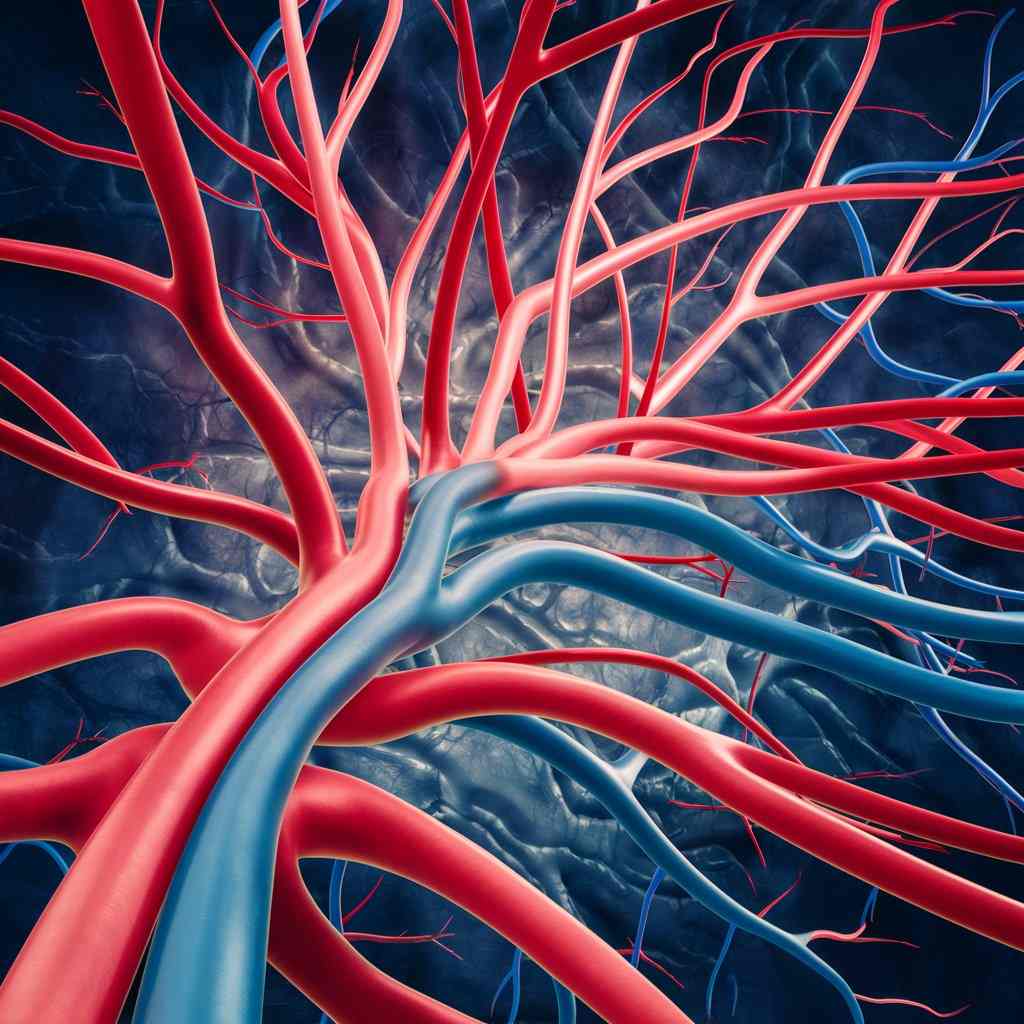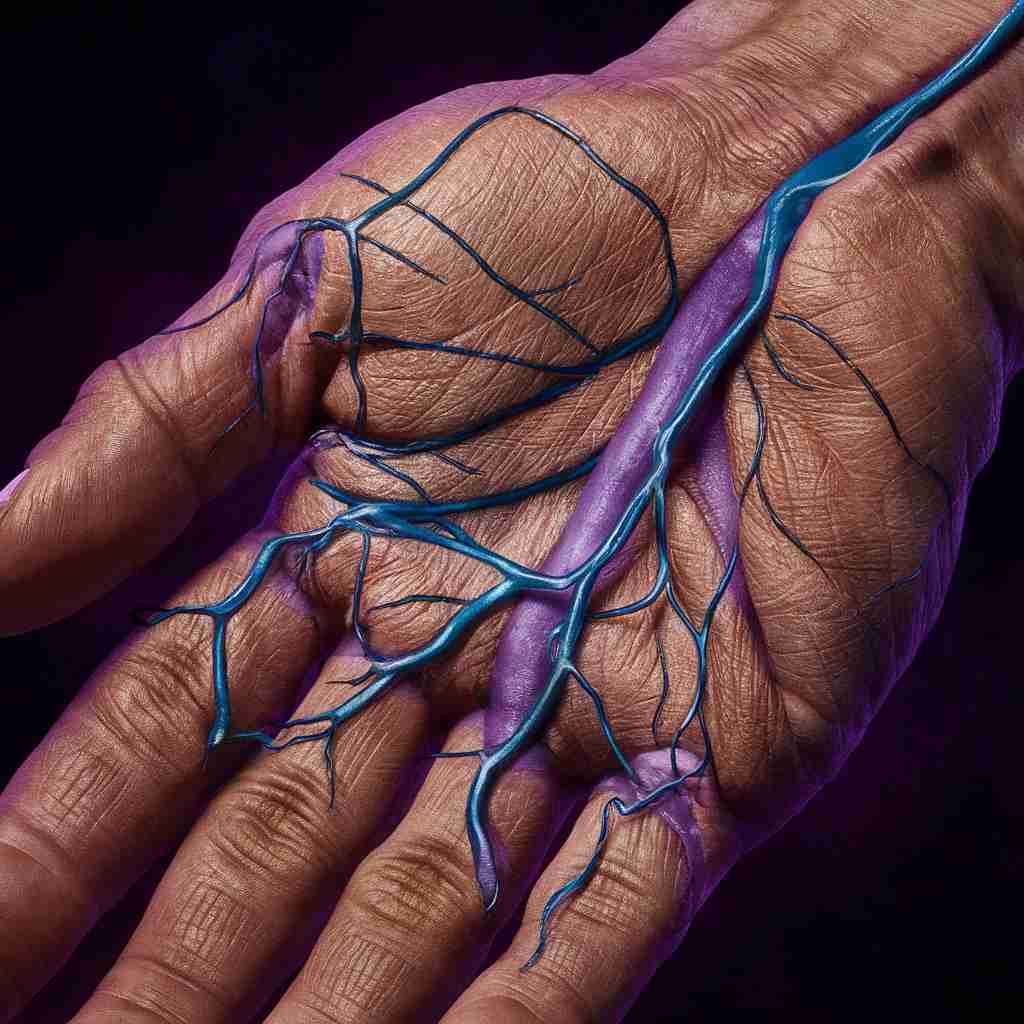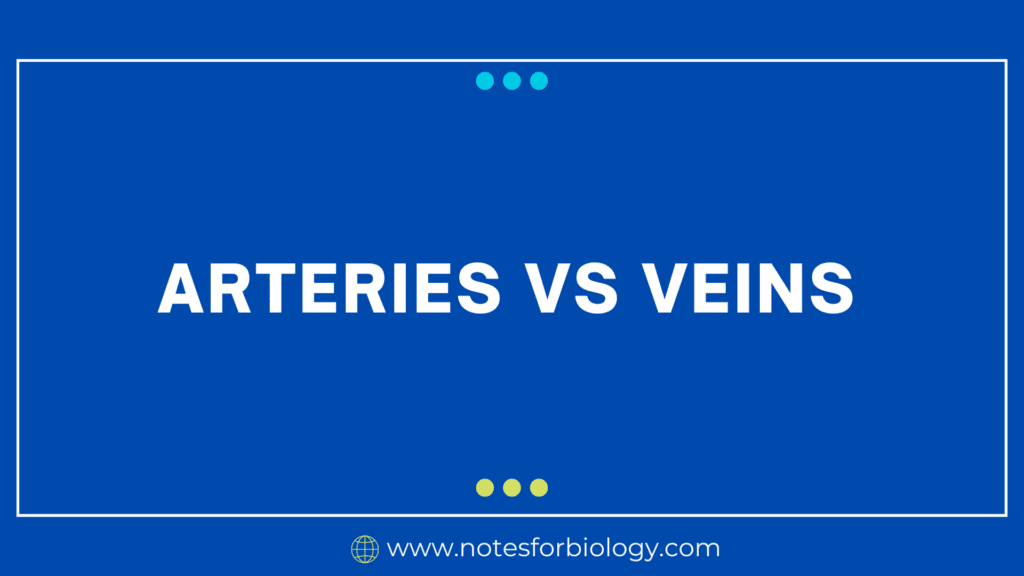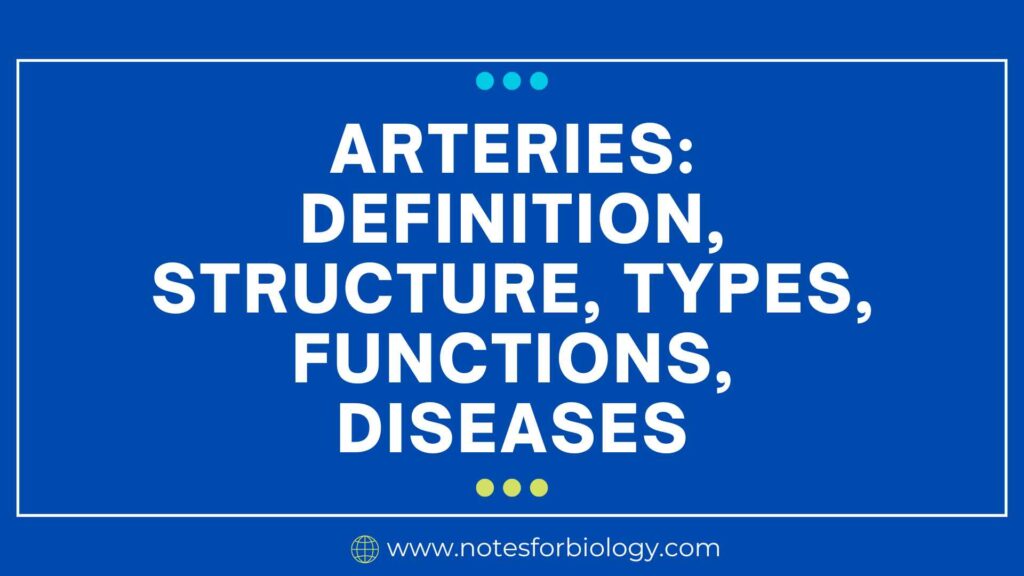Arteries vs Veins 27 Major Differences are vital parts of the circulatory system, and they each have specific functions. Arteries, which are distinguished by their thick, elastic walls that can tolerate high pressure, transport oxygen-rich blood away from the heart to other tissues and organs. Veins, on the other hand, return blood that has lost oxygen to the heart and have bigger lumens and thinner walls. Muscle contractions let veins pump blood at reduced pressure and rely on valves to stop backflow. Venous blood has a darker red color, which indicates lower oxygen levels, whereas arterial blood is brilliant red because of its high oxygen concentration.
Table of Contents
Definition of Arteries
Blood channels called arteries transport oxygen-rich blood from the heart to the body’s tissues and organs. They can withstand the tremendous pressure of blood pumped by the heart because of their strong, elastic walls. The aorta, the body’s principal artery, divides into smaller arteries that provide blood to every part of the body. The circulatory system relies heavily on arteries to carry waste items away from cells and supply oxygen and nutrients.

Definition of Veins
Blood channels called veins return deoxygenated blood to the heart from tissues and organs. Veins, as opposed to arteries, have thinner walls and have valves that keep blood from flowing backward and ensure that it only flows in one direction—that is, toward the heart. The superior and inferior vena cava, which draw blood from the upper and lower limbs of the body, respectively, are the two primary veins in the body. An essential part of the circulatory system, veins assist to keep blood flowing properly and return waste products like carbon dioxide to the heart so they may be expelled from the body.

Arteries vs Veins
| Feature | Arteries | Veins |
| Operation | Remove blood from the heart. | Move blood toward the direction of the heart. |
| Type of Blood | high in oxygen (apart from the pulmonary arteries) | (Apart from the pulmonary veins) deoxygenated |
| Blood Pressure | High | Low |
| Wall Thickness | Thick | Thin |
| Elasticity | Highly elastic | Less elastic |
| Lumen Size | Narrow | Wide |
| Presence of Valves | No | Yes |
| Flow Speed | Fast | Slow |
| Blood Volume Contained | About 30% of total blood volume | About 70% of total blood volume |
| Color | Bright red (oxygenated blood) | Dark red (deoxygenated blood) |
| Pulse | Yes, pulse can be felt | No pulse |
| Pressure Regulation | controlled by the beating of the heart | with breathing and skeletal muscle assistance |
| Direction of Flow | with breathing and skeletal muscle assistance | Towards the heart |
| Main Examples | pulmonary arteries, carotid arteries, and aorta | pulmonary veins, inferior vena cava, and superior vena cava |
| Branching Pattern | Highly branched | Convergent |
| Blood Flow Regulation | under the direction of arterioles | Controlled by valves |
| Oxygen Level | Low in pulmonary arteries and high in systemic arteries | elevated in pulmonary veins, low in systemic veins |
| Nutrient Level | High | Low |
| CO2 Level | elevated in pulmonary arteries and low in systemic arteries | Low in pulmonary veins and high in systemic veins |
| Structural Composition | More elastic fibers and smooth muscle | Less smooth muscle and elastic fibers |
| Internal Pressure | High (to withstand heart pressure) | Low (with help from other sources) |
| Clinical Access | seldom employed for drawing blood | frequently employed for blood draws |
| Response to Injury | Vasoconstriction: Quick constriction | Slow constriction, may collapse |
| Blood Flow Assistance | Directly pumped by the heart | Assisted by skeletal muscle contractions and valves |
| Appearance in Cross-section | Round and thick-walled | Irregular and thin-walled |
| Elastic Lamina | Prominent internal and external elastic lamina | Absent or very thin |
Frequently Asked Question
1. Is one of the major differences between arteries vs veins is the fact that all veins carry deoxygenated blood?
The kind of blood that arteries vs veins transport is the main distinction between them. Vennese blood has less oxygen than arterial blood, which has more oxygen. There is one exception to this rule: your pulmonary veins. The blood that is rich in oxygen is returned to your heart through these four veins, which are situated between your heart and lungs.
2. What are the 5 main differences between arteries vs veins?
Arteries carry bBlood is transported by veins into the heart and out of it via arteries. Veins transport deoxygenated blood, whereas arteries carry oxygenated blood, with the exception of pulmonary blood vessels. Muscle tissue lines the thick walls of arteries. Veins require valves to maintain blood flow and have thinner walls.
3. Are arteries bigger than veins?
Blood is removed from the heart by arteries and returned to it via veins. Veins often have thinner walls relative to their lumen, a bigger diameter, and a higher blood volume capacity. Compared to veins, arteries are narrower, have walls that are thicker relative to their lumen, and are under more pressure when carrying blood.
4. write the difference Between Arteries vs Veins?
Arteries carry blood away from the heart, and veins carry blood towards the heart. With the exception of pulmonary blood vessels, arteries carry oxygenated blood and veins carry deoxygenated blood.
Related Article


